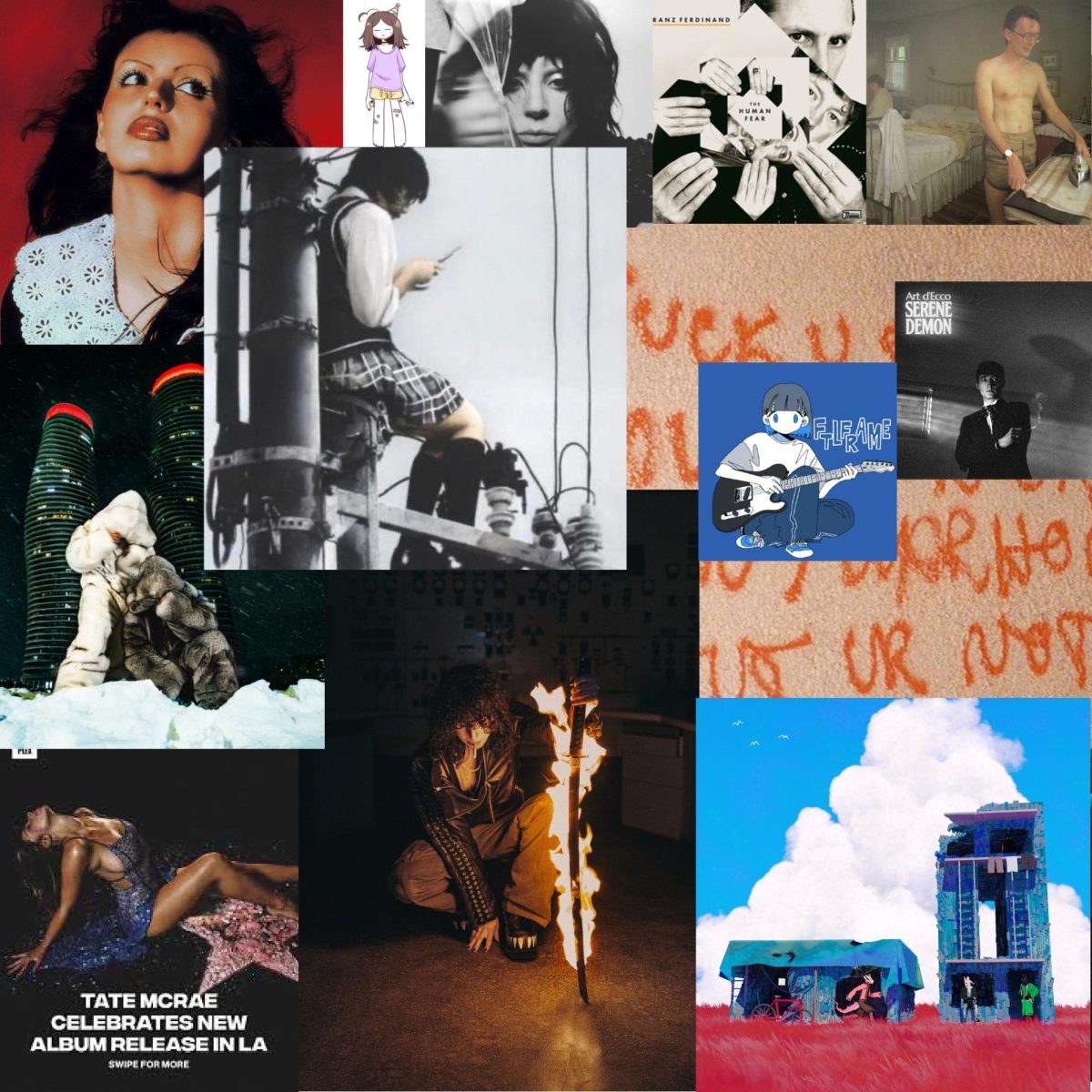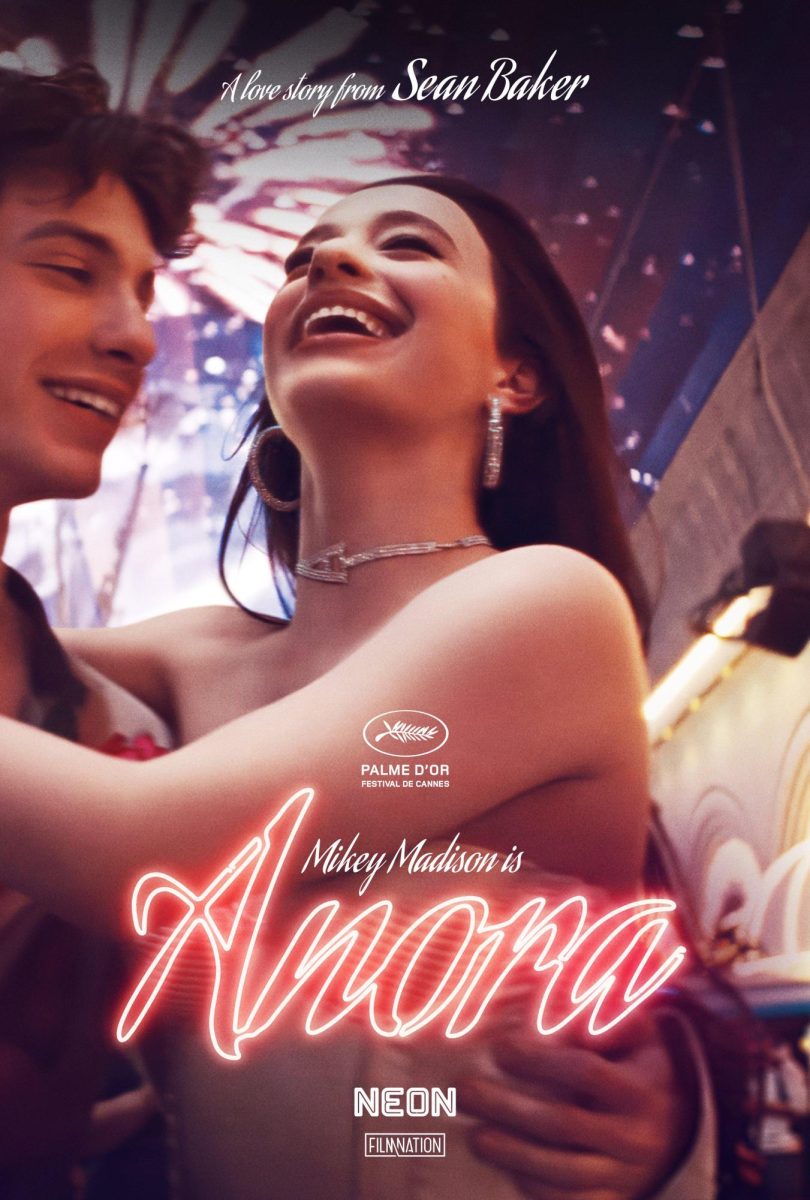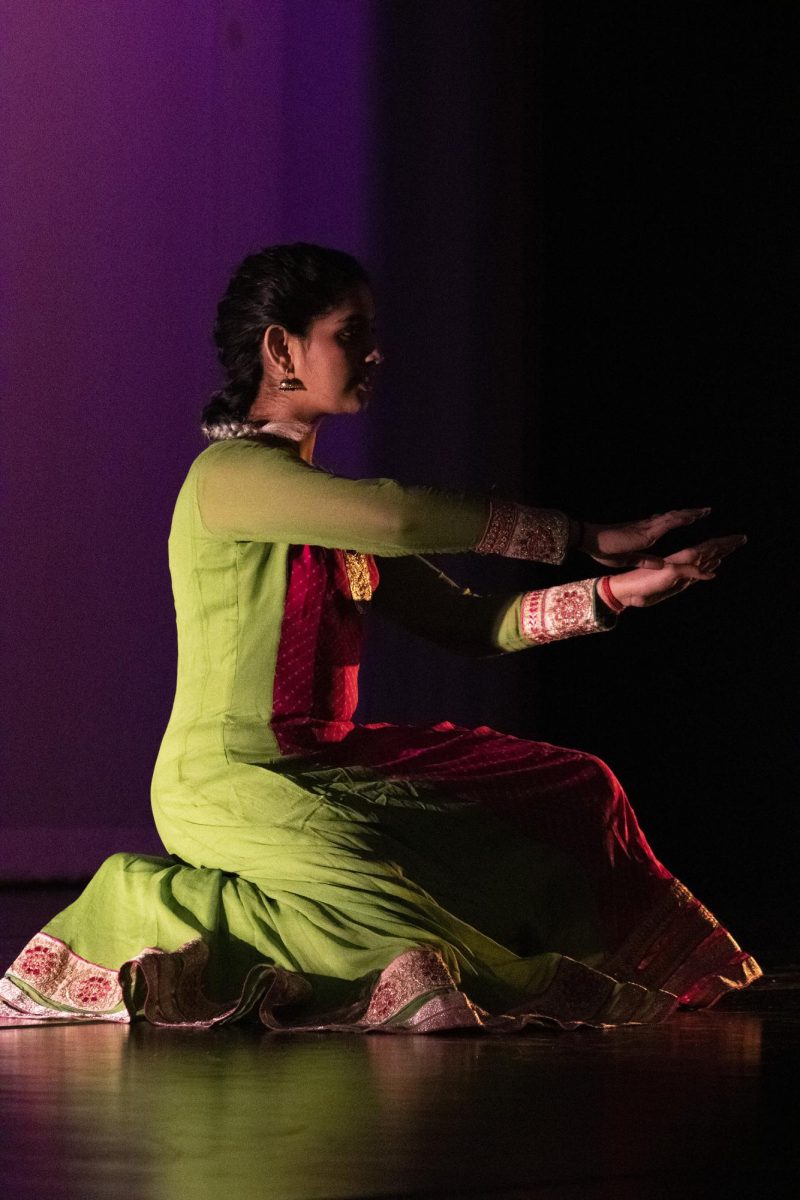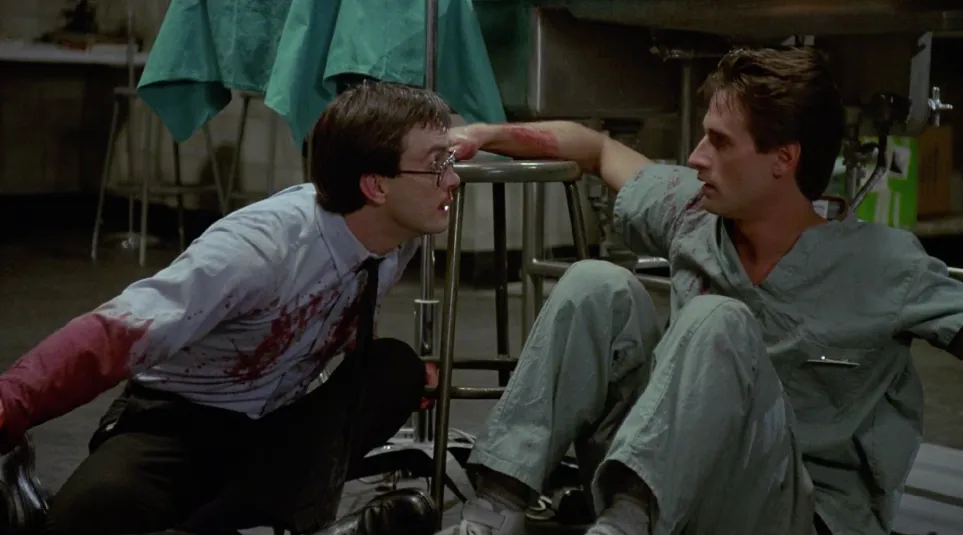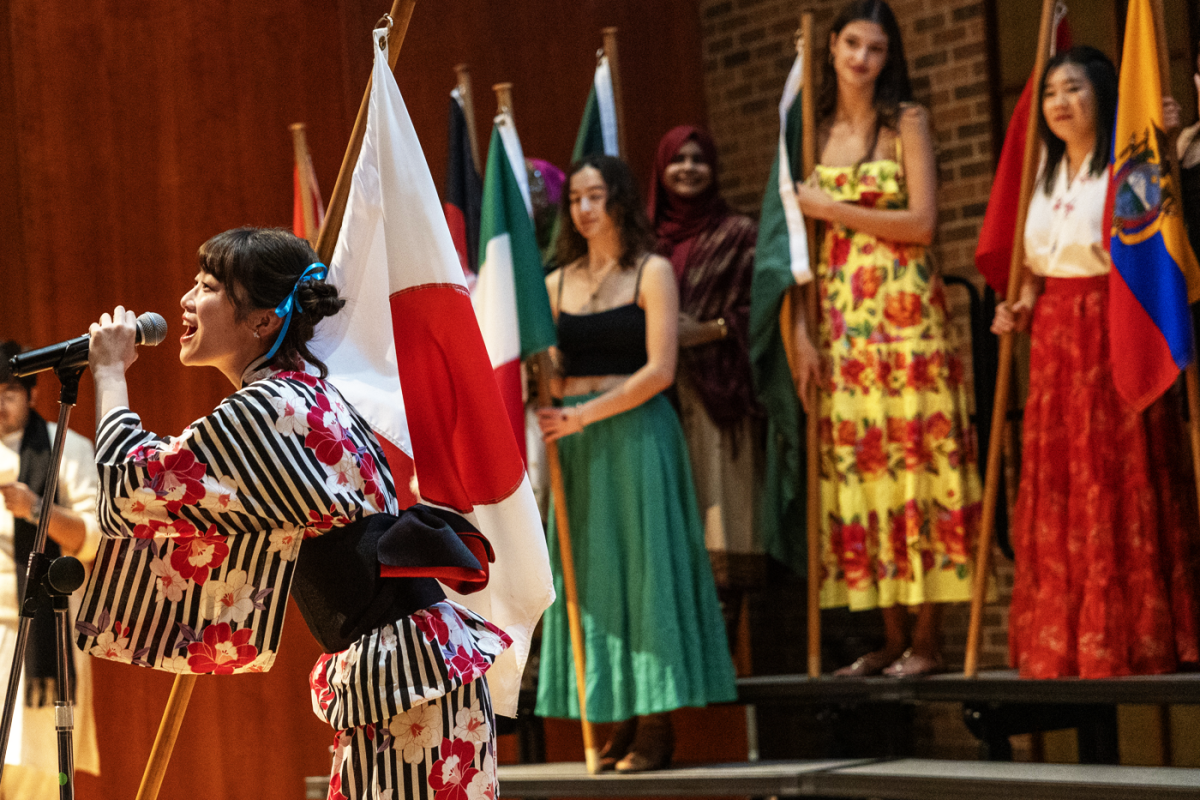The Knox in New York exhibit is both a celebration and a goodbye to the very first off-campus immersive program “Knox in New York”. The program no longer exists at Knox –it ended in 2018. Curated and organized by Professor Gilbert and his Introduction to Art Museum Studies, the exhibit pulled from the 30 years of Knox art alumni who participated in the program. There are 22 total works in the exhibit, from 17 Knox College alumni and Mercedes Matter, one of the few female artists included in the Abstract Expressionist movement of the 1930s. She was known for her ambitious series of black and white still life drawings executed with layers of forceful strokes and passed her expertise on to Knox students in the late 90s. .
In the fall term immersive program developed by Lynette Lombard and Tony Grant, 10-12 Knox students split their time between learning about the shift of the center of the art world from Europe to New York and creating their own paintings.
The experimental teaching of Lombard and Grant had a decisive impact on the program in shaping the outlook and careers of our art alumni. Encouraged by the New York Studio School’s original emphasis on formal and conceptual values associated with cubist and expressionist abstraction, students who participated in the later years of the program were also influenced by the drawing marathon course created by the current Dean Graham Nickson, which focus more on figurative narrative styles.
The exhibit has a diverse range of art mediums and approaches, with abstract expressionism and themes of the self, social, and social justice expression taking prominence. Its main focus is on the artistic development of the artists who participated in the course, and the influences of the professors’ teachings on Knox students.
The works selected have a range of styles practiced by the alumni artists, each showcasing expressionist and cubist styles.
The works selected are a diverse range of styles practiced by the alumni artists, each in their own right showcases pillars of expressionist and cubist styles. Gabe Behind the Register by Carl Voss and Forest Carnage by Sachika Goel both display the later teachings and New York Studio School focus on narrative figurative approaches to art as both artists attended towards the end in 2018. Cemetery Tree by Jason Eisner and Let’s Keep in Touch by Christopher Reno are indicative of the expressionist and cubist teachings from the early years in the program, 1996-1996.
Cemetery Tree by Jason Eisner
Jason Eisner was a part of the program in 1995 and learned from Matter herself.
Cemetery Tree is a recent work of his from 2021: a small marker drawing mounted on a custom plywood box.
The drawing itself is only seven inches by ten inches, and sits in the center of a painted white square and neon orange border with tacks at the corners. This gives it the illusion of being larger than it is and tacked onto the plywood, as the painted edges expand the boundaries of the drawing. The drawing itself is a large gnarled twisted tree in a cemetery. The foreground tombstone heads are partially finished and the background behind the tree is loose and lightly patterned.
Most of the tombstones themselves are unfinished contour lines. This leaves all visual focus on the tree in the center. Its limbs are dark and heavy, ever extending outwards towards the sides and top of the paper. The lines are full of life and sprawl over the page in quick fast strokes, evidence of Eisner’s inspiration from De Kooning. An expression of life after death, the piece relates to the experience many Knox students had in the program of style and thought process changes.
Old ways die and new growth takes their place, supported and nurtured by past experiences.
Cemetery Tree is placed on the adjourning wall next to the charcoal and chalk drawing on paper Still Life with Skulls II from Mercedes Matter, and her influence on Eisner is visible in their stylistic language. Eisner uses similar techniques with his gestural style similar to Matter’s, with forceful intersecting lines. The branches create an abstract pattern of faceted planes, and the closely observed scene also reflects the emphasis on expressive perceptual drawing by the New York Studio School. While there are similarities between the two artists, Eisner still has a unique style compared to Matter, with cleaner, looser lines.
Gabe Behind the Register by Carl Voss
Gabe Behind the Register is an oil painting on canvas from 2022 created in Chicago, where Carl Voss currently lives. He participated in 2018, at the end of the program. The painting is made of layered semi-transparent brushstrokes that condense and get darker towards the face. The piece is roughly two feet wide by two and a half tall. It depicts a figure looking down at something out of bounds. The figure is presumably “Gabe”, who was one of Voss’ coworkers while he was in the program. Everything has partial contours in thin umber colored linework, loose and flowing. The face has the highest density of brushstrokes, as Voss switches to a smaller brush tip to create fine rough details of Gabe’s stylized portrait.
Voss’ experience in the program had him finding artistic inspiration by engaging in larger socio-cultural issues such as the AIDS crisis and current Covid pandemic. The composition of the piece and Voss’ use of opacity and density in brushstrokes creates the illusion of a very bright environment with the white of the raw canvas showing in large patches. There is the impression that Gabe stands in front of windows. Gabe has a pensive, somber expression. The background becomes less defined, more large patches of color and contours. As it moves away from the face it shows how everything that was not personal or internal faded away and stopped being important in the face of a deadly pandemic.
While working in the program, Voss’ style was a more abstract and cartoon-like style, inspired by Keith Haring and Jean-Michel Basquiat. Due to his increasing humanist concerns, Voss shifted to a figurative and observational approach he credits to the methods taught at the New York Studio School. Voss bases his work on an immediate emotional response to his environment, as shown in this portrait where he displays empathy and affection towards his coworker in the ongoing pandemic.
Let’s Keep in Touch by Christopher Reno
One of the most colorful pieces in the exhibit was Let’s Keep in Touch from 2021, an oil painting on plywood. Christopher Reno participated in 1996, his sophomore year. Taught by Matter and Rosemarie Beck, his interest in chromatic abstraction came from his studies at the New York Studio School. Reno was also inspired by the minimalist painting of Agnes Martin.
Bright and beautifully patterned, Let’s Keep in Touch is about two feet by two feet large. Heavy in its bauhaus textile inspiration, the colors are saturated and bright, and the entire piece is arranged to mimic a wicker chair weave pattern. There are repeated arrangements throughout the painting.
The piece is an abstract depiction of a sunset at Lake Michigan, with the top third of the painting being a colorful assortment of pastel purples, soft blues, and cool pinks. The bottom third is a gradient from the bottom to the top of sandy browns and slightly desaturated green-blues. In the middle there is a stripe of extremely saturated bright oranges, punchy yellows, and the same pastel pinks from the “sky” portion and dark aqua from the “lake” woven behind them.
The piece is temporal and ephemeral with the depiction of the sunset. There are vague ripple-like effects on the surface of the water. It takes a moment that will eventually end and captures it, and through the abstraction it creates the feeling of continuous movement and flow.
Forest Carnage by Sachika Goel
One of the most striking pieces of them all is Forest Carnage by Sachika Goel from 2020. She participated in the program in 2018. The expressionist style of the work comes from her training with Lombard in landscape painting. It is an acrylic painting on canvas with oil pastels and mud. On the smaller size, the piece is under a foot wide and eight inches tall. It depicts a heap of garbage in the center of a forest in late fall.
The trees are barren and blend into the color of the sky through atmospheric perspective. The garbage pile itself is the largest part of the painting, with mud, grass, and bits of dead leaves mixed into paint. It is gnarly and ragged, full of turmoil. The heavy impasto added by the mud actually makes it sit off the canvas by almost a quarter inch in the thickest spots. Bits of raw canvas show through the rough textured strokes.
The piece was created while Goel was in the midst of a depressive episode and encouraged to continue creating. The destruction of the forest scene by the garbage pile and the destruction of the painting itself through the impurities of mud reflect the emotional duress she was under.
A major influence on Goel was German Romantic landscape painter Caspar David Friedrich. In romantic landscape theory there is an idea in art as the concept of “pathetic fallacy.” Nature will mirror and signify human emotion, and she takes this idea and uses it within this piece, showcasing her turmoil with the destruction of the forest. Her concern for the environment was sparked by Tony Grant and his teaching at Green Oaks.


